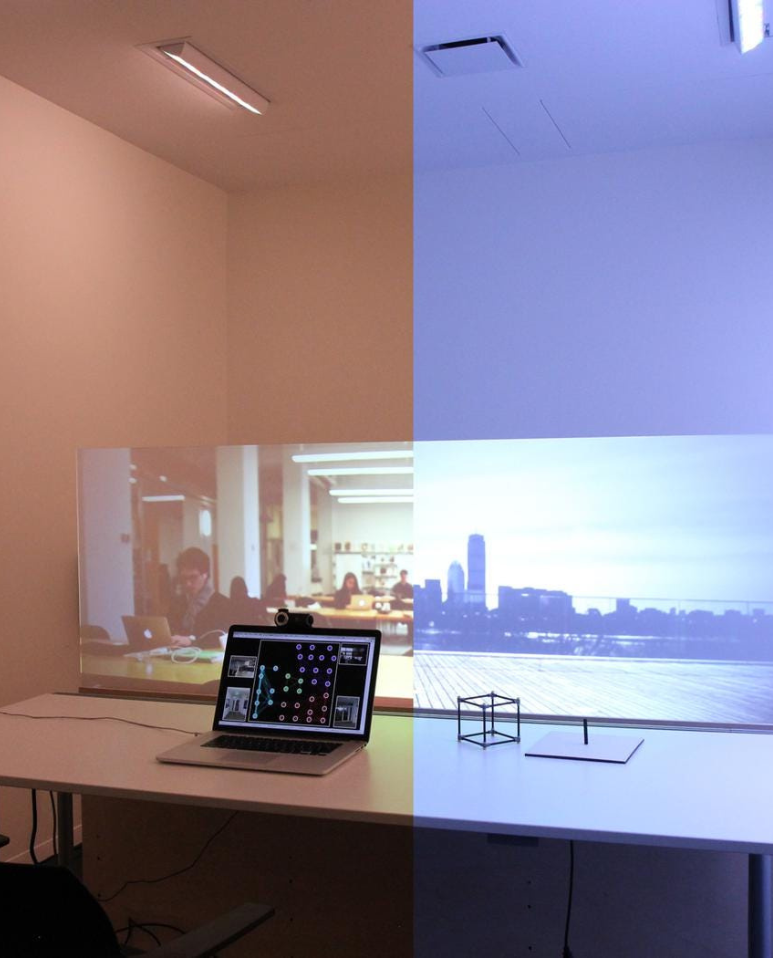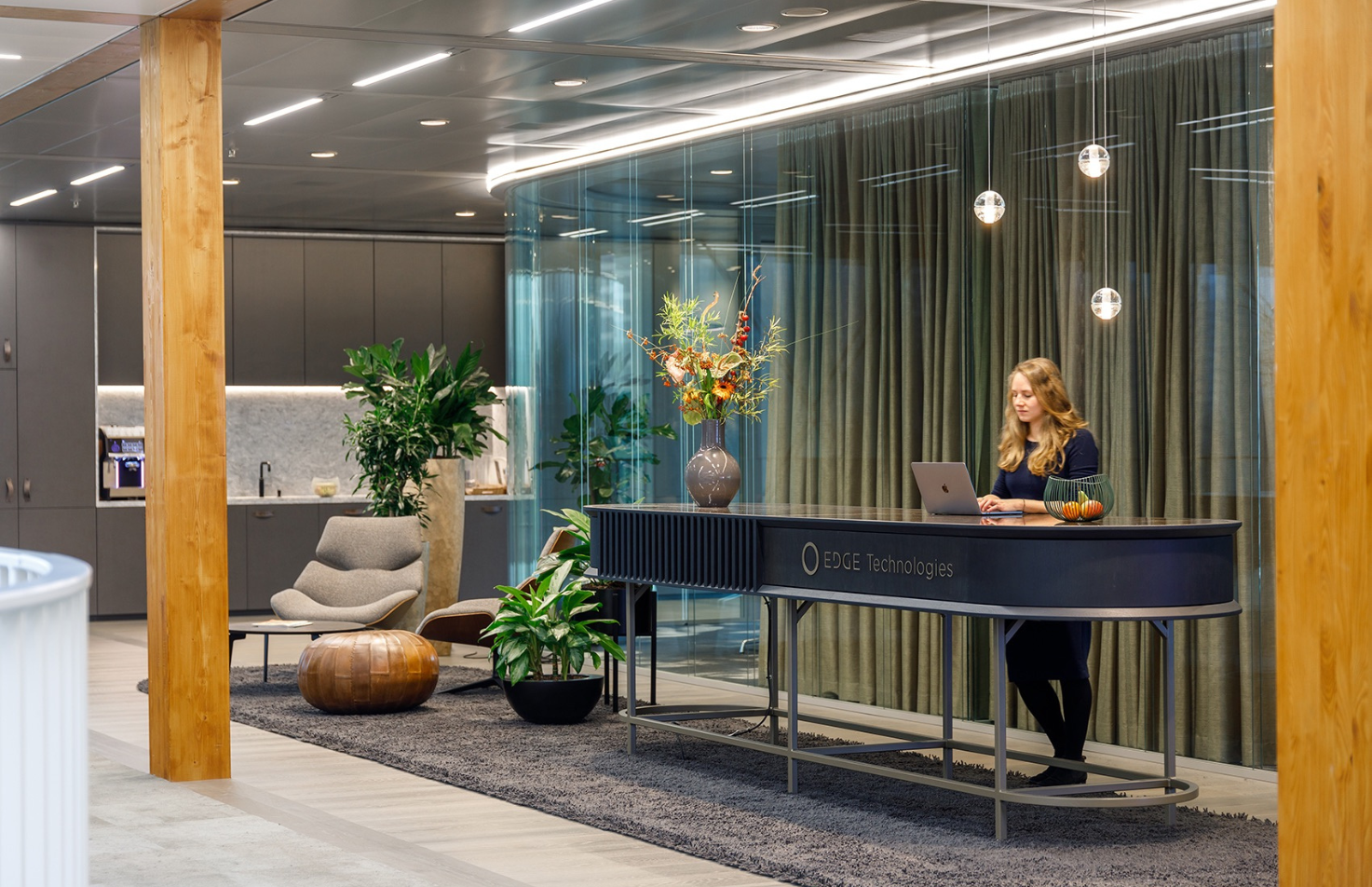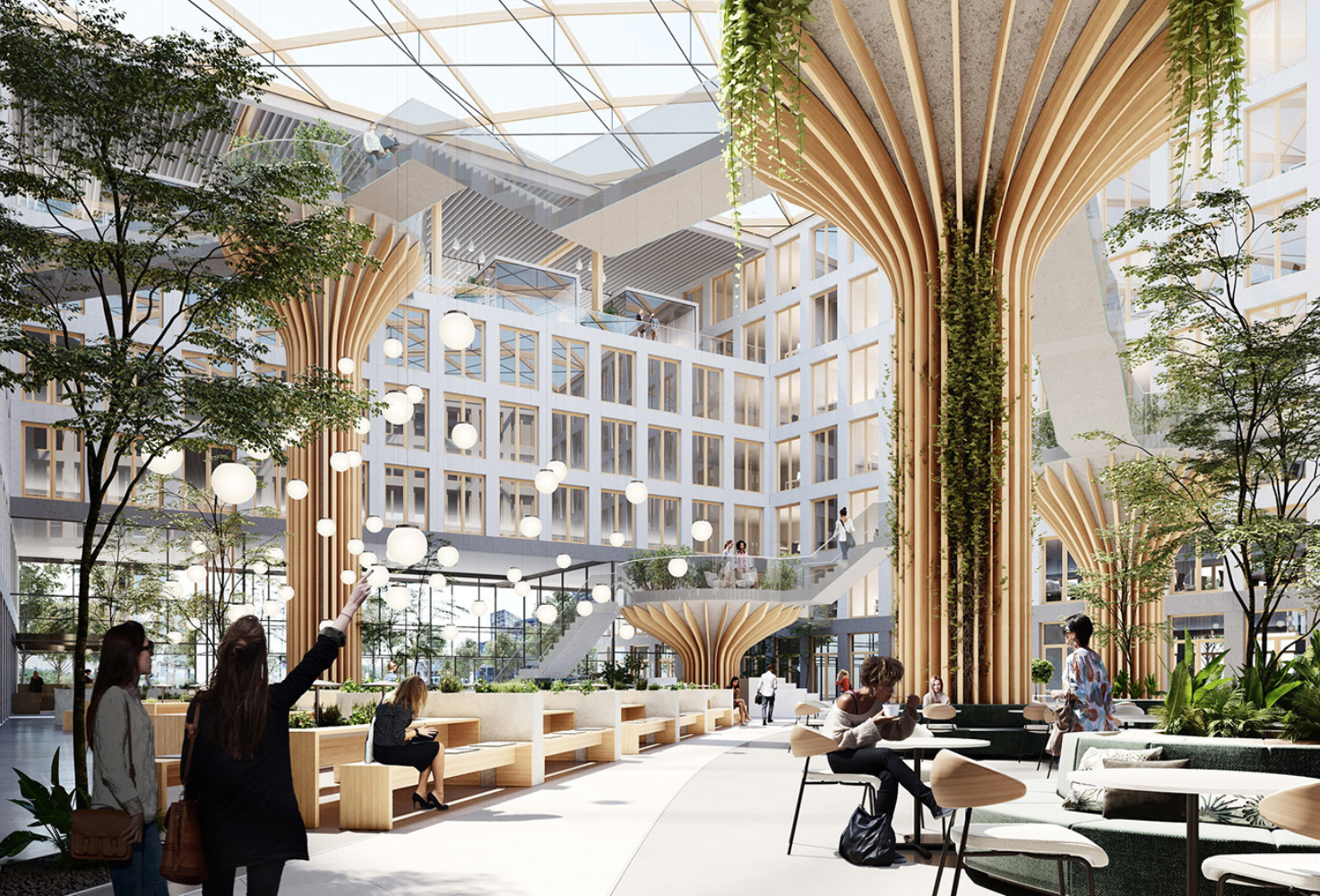When thinking about the office of the future, it’s normal to imagine a space in harmony with the people who inhabit it. It’s a workspace that can control blood sugar levels and cardiac rhythm to detect signs of hunger and exhaustion, or that perfectly oxygenates and cools the air around desks to offset any chances of an afternoon slump. It sounds like science fiction, but the reality is some workspaces already have these features in place.
By 2025, the workplace will be an intuitive environment focused on people, driven by smart AI systems that optimise worker performance, sharpen their concentration and meet their demands, making them feel healthier, more cared for and with more energy at the end of the working day than at the beginning.

The pandemic has had a lasting impact on employee awareness about health and well-being in the workplace. There is a growing concern for mental health, which has long been relegated in the workplace. Two in every five workers say their mental health has worsened since the outbreak of coronavirus (source: Qualtrics), and 74% say it’s important to have bosses who can show empathy and offer support (source: Adecco).
The significance of care and self-care has led to a rise in the demand for flexible, multi-purpose products that can be taken anywhere and which are made for (or inspired by) a healthy lifestyle and an improvement to health. The office has once again become relevant after months of lockdowns, while also enhancing the sense of belonging and community.

«In work areas, the most important thing is going to be democratisation of the space and its flexibility, in addition to employee emotional and physical health. Now, companies are looking to attract talent and that means they need to adapt
their spaces to the shift in the mentality of new generations. It’s young people who are going to shape the future of work and the office area. The future of offices will naturally shift towards a design of more human, relaxed settings». Patricia Von Arend, Denys & Von Arend

While offices were previously passive, hostile places that forced workers to adapt in order to fit into them, the workplace of tomorrow will function the opposite way. It will adapt to the needs of its occupants and will be designed and built to include thousands of sensors that interact with workers’ mobile devices and smart phones. The result will be a playground for personalisation, forming bubbles with all the customised variables around each worker.
In the future, people will be increasingly aware up to what point their workspace can affect their way of thinking, feeling and behaving, with a direct effect on how well or how poorly they do their job.
This type of lighting, which experienced a boom in homes during the pandemic, is being translated to offices with the goal of enhancing workers’ state of alertness and concentration. In some designs, aromatherapy is also added to inspire energy or relaxation
Office spaces are full of materials, furniture and plans that have restorative and revitalising properties as they attempt to follow in the wake of hospitality and home spaces to become something else with a “sanctuary for calm” style
This applies to everything, from the shape of rooms to the types of furnishings used in them, via floor and wall decoration. “Sharp edges can trigger cortisol (the stress hormone) and we know that the brain perceives them as a threat,” explains Dan Sullivan, vice president of R&D at Kova. In terms of aesthetic preferences, people tend to prefer curvilinear architecture to hard edges and straight angles.
The choice of furnishings will be important, which is why all materials that consider healthy aspects, such as natural fibres, anti-allergy materials and anti-microbial options, will prevail.
The multiplicity of people in the office will lead to the integration of products whose innovation focus is based on empathy and the changing needs of users over the course of the day and based on their age and sex.
